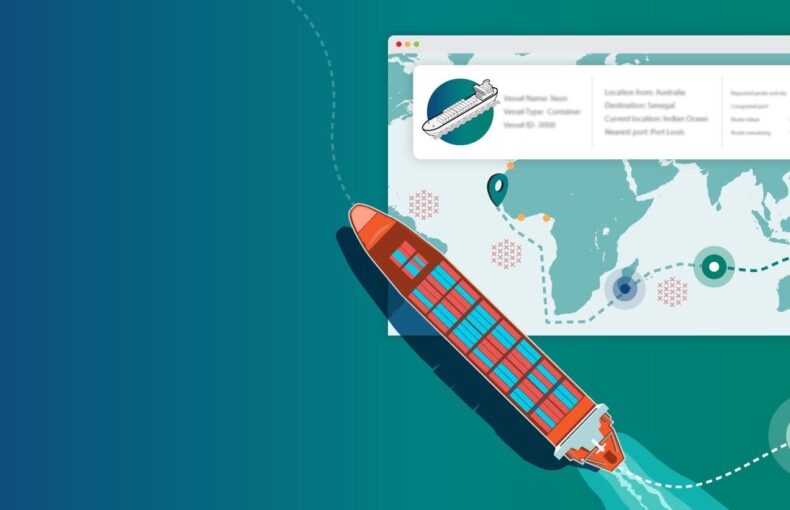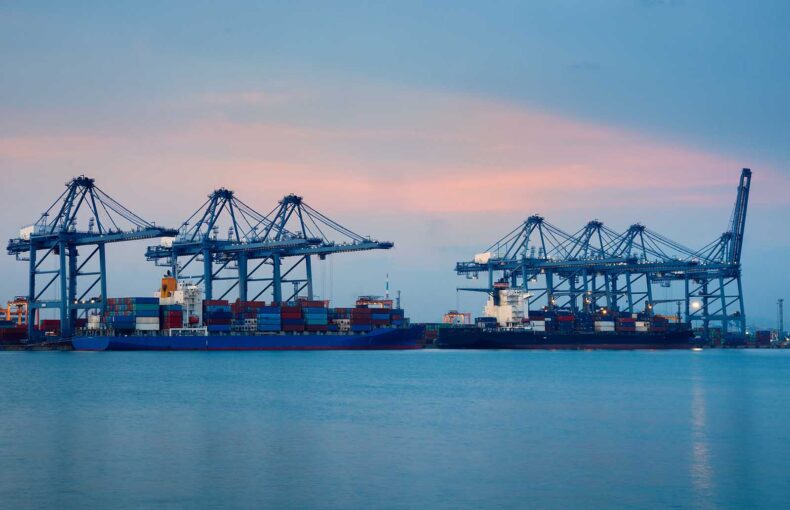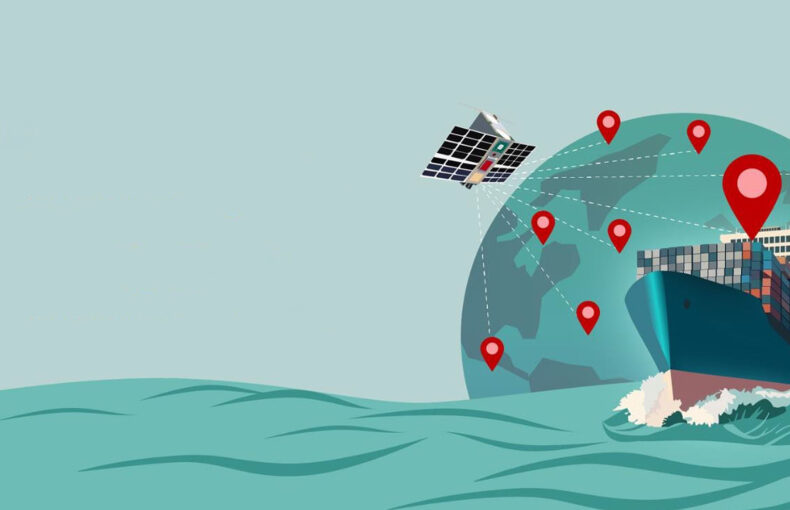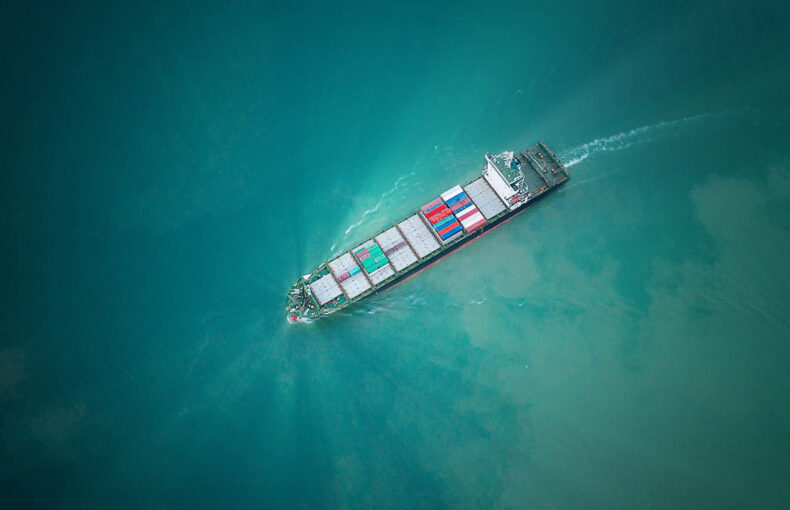Port of Hamburg: An old port thriving in today’s world
The Germans know what they have in the port of Hamburg. Known in its native land as Das Tor zur Welt—The Gateway to the World—it is just that, the nation’s primary transit point for goods.
Nestled within Germany’s second-largest city on the Elbe River, a little over 100 kilometers from where it empties into the North Sea, it is a vital part of the connective tissue linking Europe’s largest economy with the rest of the world.
As one of the great rivers of Europe, the Elbe—like the Danube and Rhine and Loire—has helped shape the human history of the region. The geographic fact that it could be developed to handle large, ocean-going ships has made it an economic lynchpin for millennia. Given the role of Germany as the gravitational center of the European Union, one of the three economic titans of the modern world economy, the port is of central importance to the global supply chain.
The modern port is managed by the Hamburg Port Authority (HPA), which was established in 2005 to unify various aspects of port operations, especially long-range infrastructure planning, business development strategies, and to represent the port within the European Union.
Long a focal point of German industry
The Elbe River begins in the mountains near today’s Polish-Czech border and flows for over 1,100 kilometers with a watershed that includes the Berlin, Prague, and Dresden regions. By every measure, it would be one of Europe’s great rivers even without the unique features of the 140-kilometer Elbe Estuary, a broad tidal river mouth that a millennia ago was deep enough to allow the ships of the North Sea to navigate downstream.
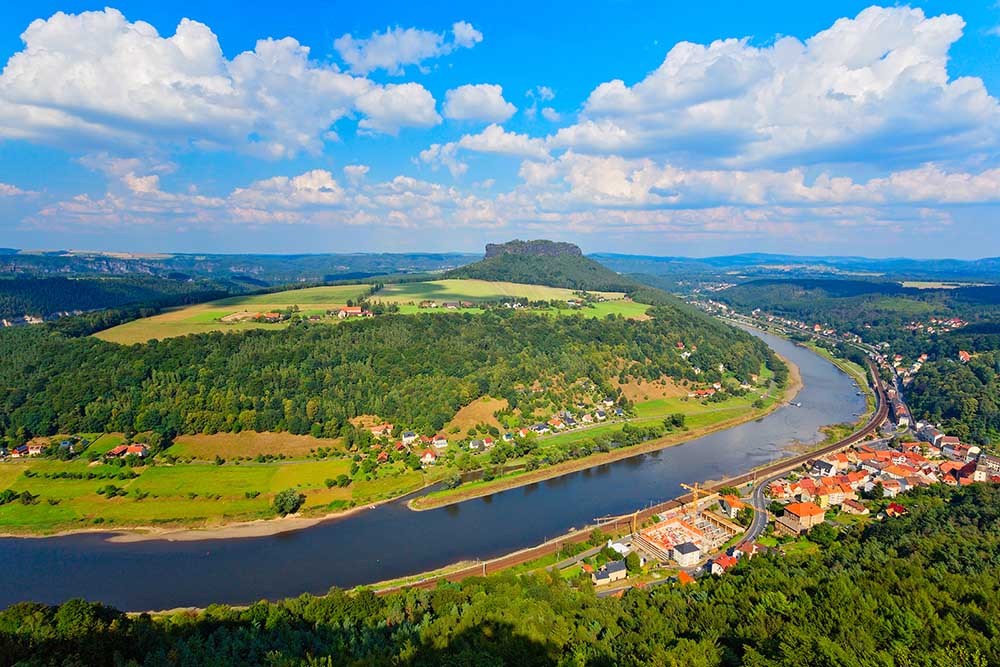
Centuries of growth
The first traces of moorage in the area of modern Hamburg date to the 9th century. The official “birthday” of today’s port is calculated from May 7, 1189, when the Holy Roman Emperor Frederick I granted the city of Hamburg the right to sail custom-free to the North Sea. Through the centuries the port and its city grew. Hamburg was a vital part of the Hanseatic League, the merchant and market city confederation that flourished for two centuries and dominated maritime trade in the North and Baltic seas. In 1266, with nearby Lübeck, it was granted a charter by King Henry III of England to operate in London, and in subsequent years a series of interwoven trade relationships were established with other port cities like Novgorod, Bruges, Amsterdam, and Bergen.
This pivotal role in international trade fueled the growth of Hamburg in the ensuing centuries, through wars and political change. In the late 18th century, it became an important European port to the newly formed United States, and by the end of the century nearly 300 ships registered under the flag of Hamburg were sailing to North Atlantic ports on the U.S. eastern seaboard. Over the next century increased traffic and the introduction of steamships drove significant development, including dredging projects mid-century that deepened the Elbe fairway between the North Sea and the port. By the early twentieth century, Hamburg was the third-largest in the world after London and New York.
A key to modern German commerce
After the devastation of World War II, which saw the port largely destroyed from the first firebombing of the war, significant funds were poured into rebuilding. It quickly again became the region’s economic driver and today is responsible for the employment of over 260,000 people and for the handling of over 10,000 ships annually. It is Germany’s largest port and the second-largest container port in Europe. In 1990 total volume was 61 million tons; it was over 120 tons in 2021.
Last year the port handled 88.9 million tons of general cargo (up 1.3% YOY), 39.8 million tons of bulk cargo (up 3.3%), and 8.7 million TEUs (up 2.2%). The port is also a major cruise ship destination, with 210 making a port call in 2019 prior to COVID restrictions. In fact, the world’s first purpose-built cruise ship, the Prinzessin Victoria Luise, was built in Hamburg in 1899.
But the Port of Hamburg is not simply the third-largest in Europe after Rotterdam and Antwerp. It’s also the continent’s largest rail port, with over 90% of the cargo that moves through the port also transported by train. As a rail hub, it plays a key role in Europe’s infrastructure and also the New Silk Road, with over 200 connections per week carrying over 160,000 20-foot equivalent units (TEUs) to China in 2021. Likewise, the nearby Kiel Canal—which runs from the mouth of the Elbe to Kiel-Holtenau on the Baltic—is the world’s busiest artificial waterway, providing over 30,000 ships annually the opportunity to not make the difficult voyage around Jutland. The Elbe River and Elbe-Seiten Canal handle many goods as they move onto other regions of Germany and central Europe.
Location, location, location
As should be evident, what makes Hamburg such a valuable transportation hub also makes it prone to congestion concerns. As a look at Spire’s congestion tool for the port over the past 6 months makes evident, it saw a big increase in “weekly average delay to terminal” starting in late 2021 and has continued to have issues since then.
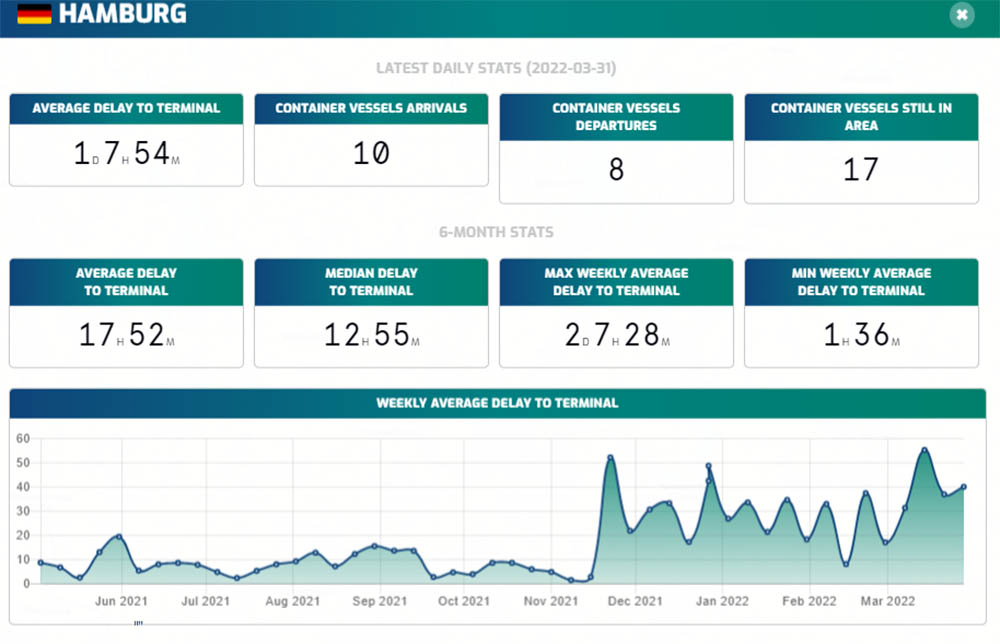
Between two of the world’s busiest seaways
What makes Hamburg such a key location for transport is not just the Elbe’s ability, with constant modern dredging operations, to give egress to the world’s largest ships to a port that is 130 kilometers inland. Another geographic blessing is that the river empties into the North Sea between two of the world’s busiest seaways—which is also a source of ongoing challenges.
The Baltic Dry Index (BDI) is not one of the world’s most important leading economic indicators by accident. The name is a historical remnant from when goods from the Baltic were a key segment of the burgeoning global trade system centered in 18th-century London. But this does not mean Baltic trade is no longer intense. The Danish Straits, the sea route between the Baltic and the North Sea, is still the world’s fifth-busiest shipping route, handling trade for Scandinavia, the Baltic states, Poland, and Russia.
Using Spire data, the two graphs below show that the Danish Straits is busy year-round, with ~2000 commercial vessels crossing the area each month. General cargos is the most important fleet in terms of number of vessels (~950 vessels each month), however the largest carrying capacity is reached for dry bulks, with a monthly average of 550 million deadweight tons.
And the busiest? The English Channel to Hamburg’s west, with major ports Antwerp and Amsterdam in-between. The reality is that getting in and out of Hamburg’s port means running a gauntlet, albeit a well-managed one, even in the best of times.
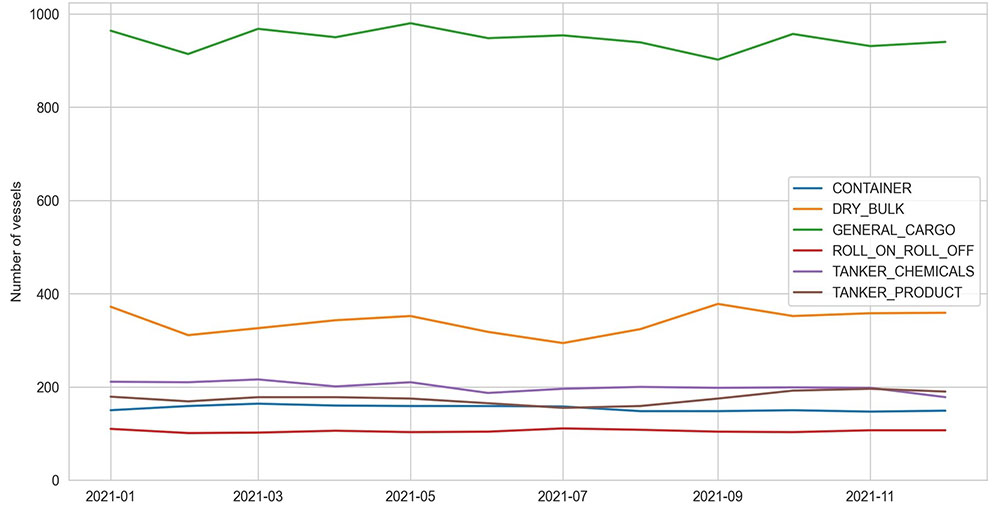
Monthly number of vessels in the Danish Straits in 2021 (6 most important fleets)
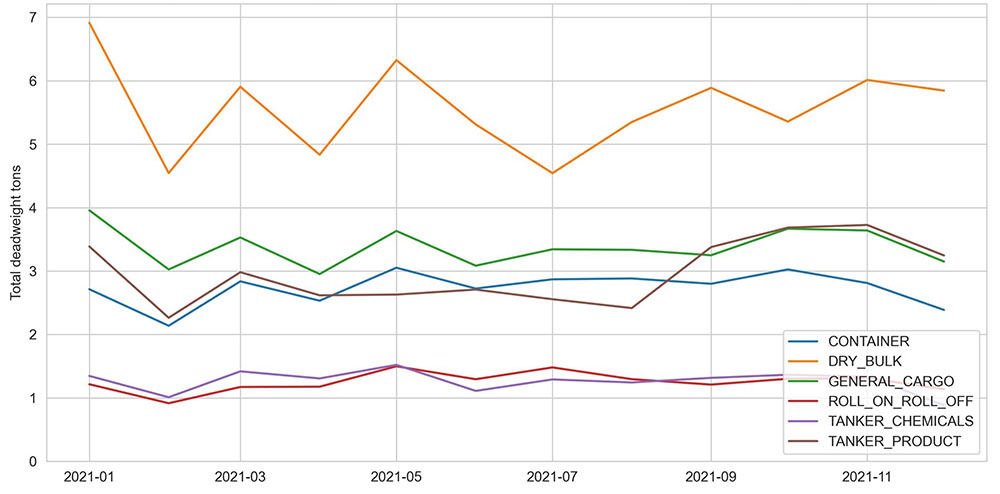
Monthly total deadweight tons in the Danish Straits in 2021 (6 most important fleets)
Sudden, current challenges
Needless to say, the past few years have not been without their challenges. The global supply chain angst of 2021–22 is being felt in Hamburg.
As much of the world began getting a respite from COVID in 2021, economic activity grew, especially consumer spending. Late in 2021, the port reported that in the first ten months of the year 516,000 TEUs had been transported with the United States (which ranks second to China for total traffic into Hamburg), representing a 5.6% increase over 2020, which had been 7.6% below pre-pandemic 2019.
The current Russian invasion of Ukraine is a new challenge, one forcing shippers and port authorities to make quick decisions under the duress of economic sanctions. This is yet another sudden challenge to normal shipping activities.
“We handled 337,000 TEU in seaborne traffic with Russia last year. That total will now be distinctly lower. The Port of Hamburg has hitherto been one of the most significant hubs for Russian imports and exports,” said Port of Hamburg Marketing Joint CEO Axel Mattern on March 4 when speaking about Hamburg’s terminals being closed to most Russian shipments for the foreseeable future.
There are some food, medical, and other humanitarian cargo—and for now petroleum products—exempted from the sanctions. But these goods will require direct inspection by customs officials outside of normal automated procedures, which will slow down the transit of Russian-bound ships.
Innovation as tradition
Facing such logistical and technical challenges is nothing new for the managers of the port. Given the breadth of the Elbe when it enters the North Sea and the powerful hydrology unleashed by decades of dredging, keeping the waterway open demands constant attention. Sedimentation has become an evermore serious issue, impacted in part by changes in rainfall patterns at the Elbe’s headwaters and alterations in tidal ranges due to rising sea levels. Major dredging and widening operations were undertaken in 2017 and 2021. The latest project ensured that, regardless of tidal conditions, ships with 44-foot draughts could access the port while the widening reduced transit times.
Such projects are only part of how the Port of Hamburg is keeping up with the velocity of the modern global supply chain.
Digitization
Much of the port’s modernization is driven in concert with the Hamburg Innovation Port (HIP), a technical think-tank center harnessing the private sector and cutting-edge academic research to develop solutions for several economic sectors, including logistics and transportation.
Immediately before the onset of COVID-19, smartPORT Hamburg was launched as a broad digitalization scheme to adapt port operations to the Internet of Things (IoT) age. One aspect is embracing the Building Information Modeling (BIM) standard, which uses software design tools to enable deep collaboration on the planning, construction, and operation of structures and systems. It is a powerful tool for conceptualizing and making efficient large-scale infrastructure projects like ports. When incorporated with analytical tools like historical automatic identification system (AIS) data, this tech-driven process of planning and design empowers a vastly better functioning and efficient final product.
Other digitalization programs have focused on incorporating the 5G mobile network into port operations (Hamburg was the first European port to serve as a testbed for the 5G applications) and the incorporation of IoT sensors into infrastructure to harness machine learning analysis and artificial intelligence utilization to improve port operations.
Alternative energy
Global warming was already a strong force pushing the HPA to adapt better, cleaner forms of energy. Those efforts are now even more critical due to the war in Ukraine, which has highlighted how dependent Germany and many other EU/NATO member states are on Russian oil and natural gas.
On the eve of the invasion, the HPA had already announced an effort to accelerate the production and adaptation of hydrogen as a fuel source. Hydrogen can be manufactured using renewable sources like wind and solar while producing only water as a byproduct when later used in fuel cells. This announcement came only a few months after Hamburg signed a development alliance agreement with Spain’s Port of Valencia that emphasized hydrogen generation, storage, and transport in powering port terminals and machinery.
Environmental efforts
Embracing better forms of energy is one aspect of the overall fight to run a cleaner port and lessen the environmental impact in an area that has seen a great deal of pollution over centuries of industrial development.
The ecology of the Elbe Estuary is rich. Technically, the great river empties into the Wadden Sea, a portion of the North Sea that is an intertidal zone of flats and wetlands that is a UNESCO World Heritage site. In Germany it is incorporated into the Schleswig-Holstein Wadden Sea National Park, founded in 1985, and is part of a network of nearby maritime parks in Denmark and the Netherlands.
Along with guarding this marine protected area with modern protective tools like maritime AIS tracking, the HPA is adopting a number of new technologies to protect the environment. These include switching to sulfur-free fuels for the port’s vehicle and ship fleet, supplying docked ships power from cleaner land-based sources, calculating mooring fees on the Environmental Ship Index (ESI), and transitioning terminal equipment to renewable-only energy sources.
Port of Hamburg: A port that still thrives
The Port of Hamburg has long been intertwined with the national economy of Germany, and now the European Union. It has survived centuries of political upheaval and war. It continues to be one of the busiest, best-managed, and most innovative ports in the world.
 Written by
Written by